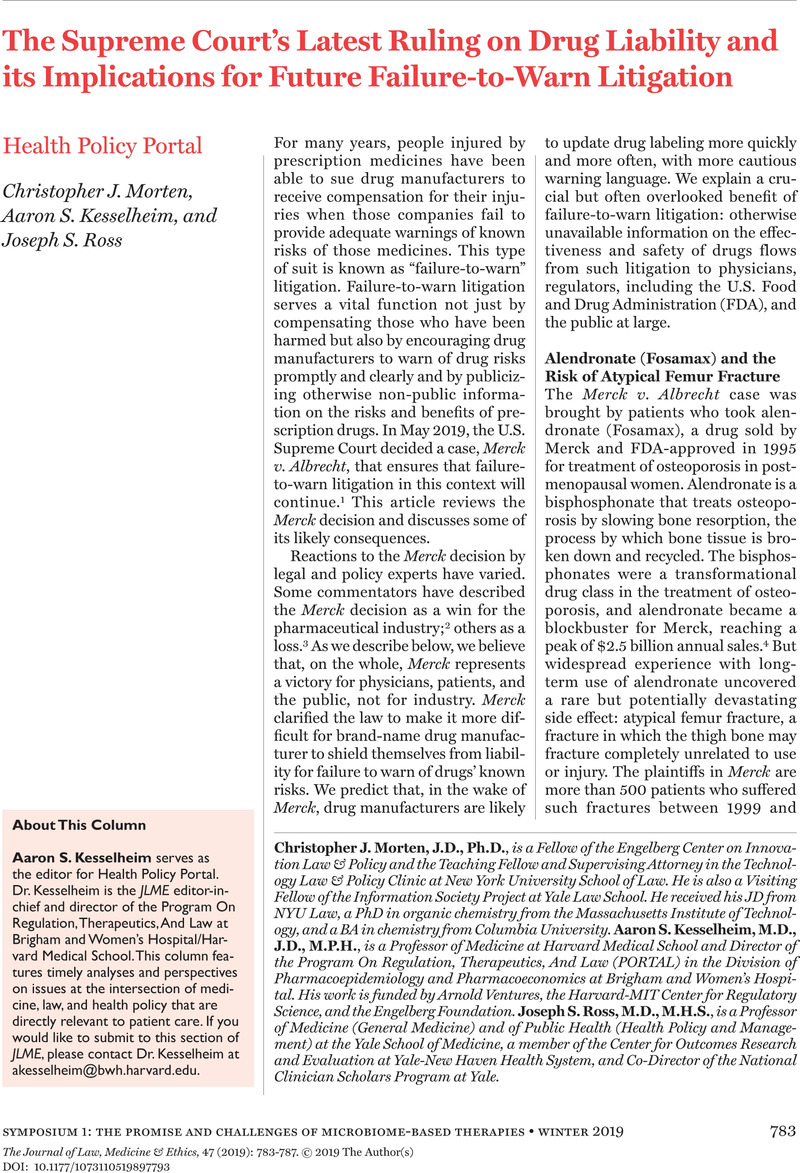In our view, this central holding of the
Merck decision represents a major victory for patients and a major defeat for drug manufacturers. As noted above, a separate portion of
Merck decided a procedural issue: should the question of whether preemption applies in a given case be decided by a judge or a jury?
Merck held that the question should be decided by a judge, not a jury.
Merck, 139 S. Ct. at 1680. This outcome permits judges to dismiss some failure-to-warn lawsuits prior to trial, and it may favor industry to the extent that juries are more likely than judges to side with a sympathetic plaintiff. However, we believe the import of
Merck's central holding on the legal standard for preemption outweighs the import of the procedural judge-versus-jury question, and we therefore disagree that
Merck represents a victory for industry, on the whole.
Google Scholar